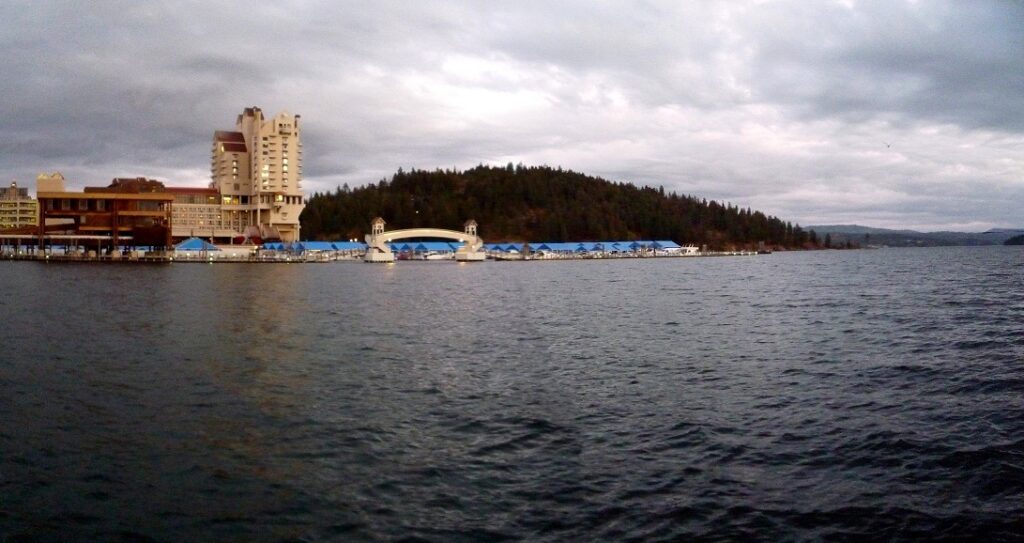
Moving to Coeur d’Alene, Idaho: A Comprehensive Relocation Guide
Considering moving to Coeur d’Alene, Idaho? This stunning lakefront city offers resort lifestyle, outdoor paradise, and mountain beauty. With approximately 57,000 residents in 2025, Coeur d’Alene combines lake living with four-season recreation and North Idaho’s premier destination.
Demographic Profile to Consider If Moving to Coeur d’Alene:
Coeur d’Alene’s 2025 population is approximately 57,000 residents in this Kootenai County city along the shores of Lake Coeur d’Alene. The median age is around 42 years, with retirees, outdoor enthusiasts, remote workers, and families. The population is approximately 92% White, 4% Hispanic, 2% Native American. Coeur d’Alene features stunning lakefront with the iconic Coeur d’Alene Resort, downtown with shops and restaurants, residential neighborhoods with mountain views, and resort atmosphere. The city attracts wealthy retirees from California and Washington, remote workers seeking lifestyle, and outdoor enthusiasts prioritizing recreation. Coeur d’Alene appeals to those seeking lake living, four-season recreation, and scenic beauty with resort amenities. The community values outdoor lifestyle, conservative values, property rights, and preserving scenic character. Find trusted local services for moving, living, and working in Coeur D Alene.Coeur D Alene Relocation Directory
Cost of Living to Consider If Moving to Coeur d’Alene:
Coeur d’Alene represents premium pricing for Idaho. Median home values range from $520,000 to $750,000+ in 2025, with lakefront properties commanding significantly more, reflecting massive demand from out-of-state buyers. The median household income is approximately $68,000. Rental properties average $1,700 to $2,800 monthly. Idaho’s state income tax is flat 5.8%. Overall cost of living has risen dramatically with explosive growth though remains lower than West Coast metros. Coeur d’Alene attracts wealthy retirees, successful remote workers, and those fleeing higher-cost areas while accepting premium Idaho pricing. Housing costs reflect lakefront desirability and limited supply with growth creating inventory challenges. The combination of lake beauty, recreation, and resort character justifies premium pricing as the region’s most desirable location.
Economy and Job Market:
Coeur d’Alene’s economy centers on tourism, healthcare, retail, and remote work. Major employers include the Coeur d’Alene Resort, Kootenai Health (regional medical center), retail centers, restaurants, and service businesses. Tourism drives hospitality employment year-round. Many residents are retirees or work remotely. Healthcare serves the region. The Coeur d’Alene Casino (Coeur d’Alene Tribe) provides employment. Typical industries include tourism, healthcare, retail, and services. The economy depends on visitor spending and serves retiree/remote worker population. Local employment opportunities are limited for career advancement. Many residents prioritize lifestyle over income.
Education:
Coeur d’Alene School District serves city students with schools including Coeur d’Alene High School and Lake City High School. School quality is competitive. North Idaho College provides associate degrees and workforce training. The educational infrastructure serves the community adequately though the area attracts more retirees than families with school-age children.
Recreation and Lifestyle:
Coeur d’Alene offers world-class recreation centered on the 25-mile-long Lake Coeur d’Alene with boating, fishing, paddleboarding, and water sports. The lake’s floating boardwalk and Resort grounds create iconic setting. Residents enjoy skiing at Silver Mountain (45 minutes) and Schweitzer Mountain (90 minutes), hiking Tubbs Hill and countless trails, mountain biking, and year-round outdoor activities. Downtown features restaurants, breweries, and shops. The North Idaho Centennial Trail provides paved recreation paths. Silverwood Theme Park (30 minutes) offers family entertainment. The lifestyle emphasizes outdoor recreation, lake living, resort atmosphere, and four-season activities. The area receives snow enabling winter sports while summers showcase perfect lake weather. The community values outdoor lifestyle, conservative politics, property rights, and scenic preservation. Living in Coeur d’Alene means extreme costs, tourist crowds (especially summer), accepting that locals are priced out increasingly, and embracing resort-town character. The stunning beauty and recreation access justify trade-offs for many.
Healthcare and Services:
Coeur d’Alene residents access comprehensive healthcare through Kootenai Health providing full-service hospital care and specialized services as North Idaho’s regional medical center. The healthcare infrastructure serves the area and surrounding region.
Transportation:
Coeur d’Alene is accessed via Interstate 90, U.S. Highway 95, and various corridors. Spokane International Airport (35 minutes west) provides extensive flights. Citylink Transit operates limited bus service. Most residents use personal vehicles. Downtown offers some walkability. Typical travel times within the area are reasonable though traffic increases during tourist season.
Conclusion:
Moving to Coeur d’Alene in 2025 offers lakefront paradise living with resort lifestyle, outdoor recreation, and mountain beauty. The city’s combination of stunning lake, four-season sports, and scenic grandeur makes it ideal for wealthy retirees, remote workers, and outdoor enthusiasts seeking North Idaho’s premier destination where every day feels like vacation and lake living defines life in Idaho’s most beautiful and expensive city.

